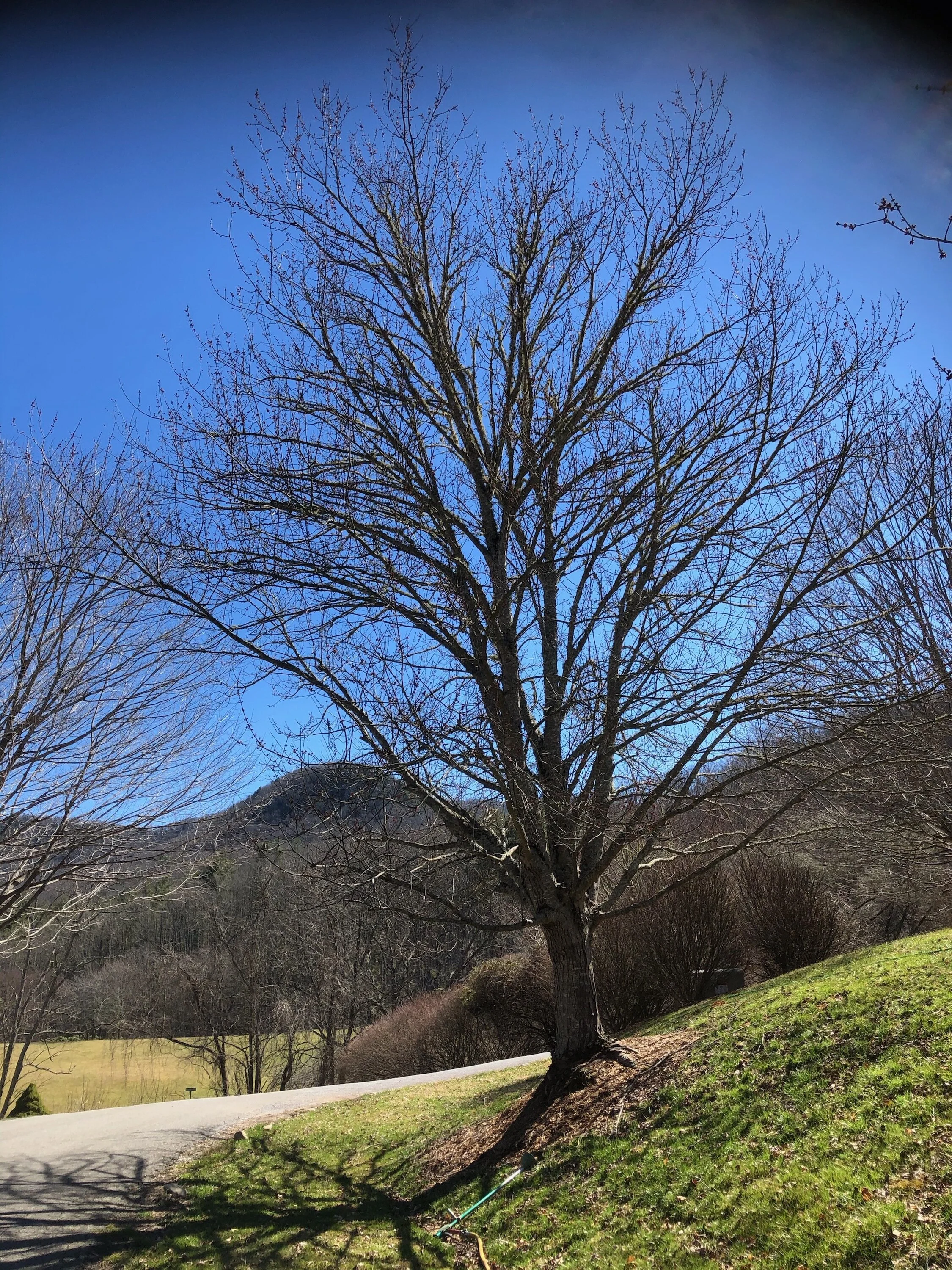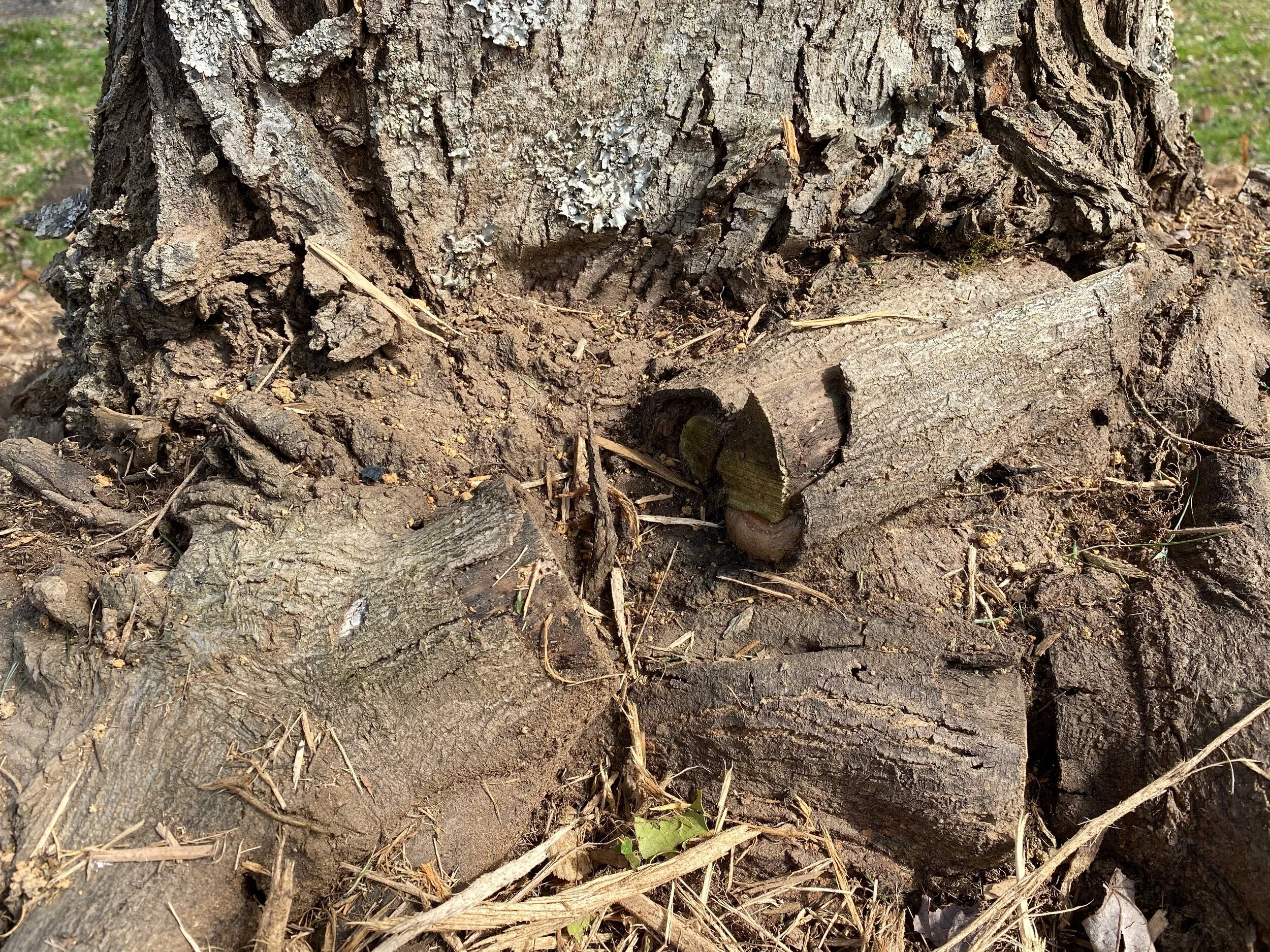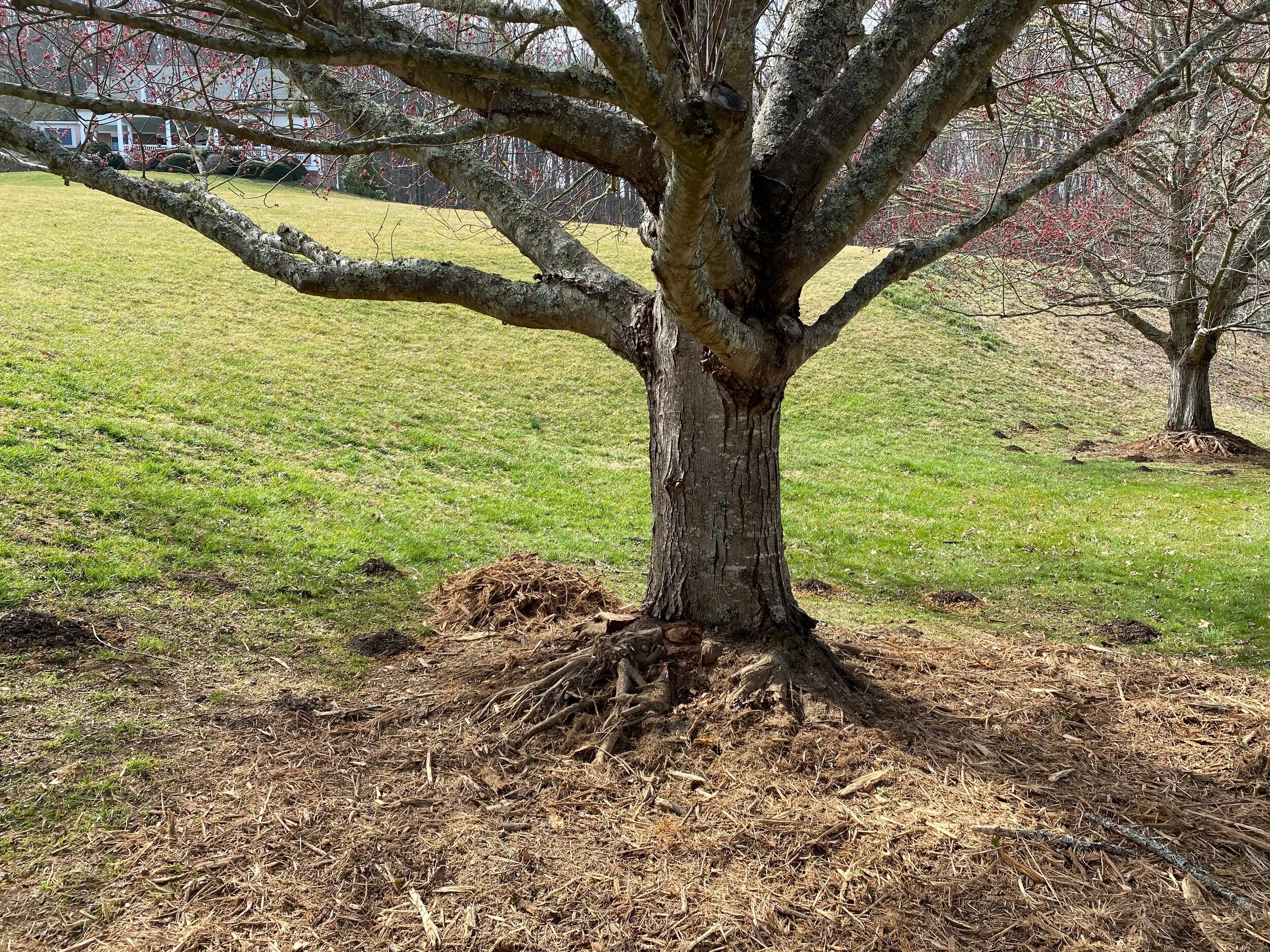Seven red maples: how we very slowly bring misplanted trees back to health (Or: why planting trees correctly is worth it)
Twenty-three years ago, a popular landscaping company that we shall not name planted a line of seven red maples (Acer rubrum) at our client’s property in Fairview. This company machine-dug the holes and plopped them in without removing the root ball from its burlap and wire. Sadly, this is a practice still seen in today’s landscaping industry. It’s unfortunately something that Smart Feller Tree Works has to remedy time and time again. Misplanting causes long-term damage: you can see the root mass of these trees growing up out of the ground and girdling the tree because the roots weren’t freed to grow properly downward and outward in the soil below.
Our client reached out to us a few years ago about the poor health of these trees. Their tops had been dying. They had really sparse canopies. At that time I was learning from TJ Dutton of Crown, Root & Soil here in Asheville about root and soil practices that can help save misplanted trees. We came out to the site with a rented concrete saw. TJ taught me how to bifurcate these roots on all four sides, doing our best not to cut the cambium or buttress flares that were buried beneath the girdling mass.
These are old cuts, made years ago (see how the trunk is pushing the cut root out and away?) The trees responded really well to the first cuts, with girdling roots dying over time and releasing their grip on the trunks. The year after TJ and I made them, you could appreciate how much fuller the canopy and buds were. Here is some of the bud action, today:
Before you plant your trees, contact Smart Feller Tree Works in the Asheville, NC region to guide your planting practice. It could save your trees years of stress and eventual decline.
Since these maples responded so well to our tree surgery, we’ve continued. The way we cut spreads out the stress to the tree. Here’s how tree surgery looks, in action:
In our current understanding, trees react to their conditions as they grow: they don’t necessarily plan, they just react. So when they are planted with the root ball in a burlap cage, they can’t grow down, so they grow up and out over the cage. After that they suffer overmulching for years, which encourages the growth of stem girdling roots. The trees are just responding, reacting, not necessarily knowing what they’re doing to themselves.
But these are good, mature trees in a struggle for their lives. As I vertical mulch I see just how many roots that these maples are sending out, which gives me a lot of hope that they can sustain the damage from the human mistakes made in their planting and keep living.
My client and I have talked about the possibility of Smart Feller Tree Works removing and replacing these trees. We got into a long philosophical discussion about how these debilitating nursery and planting practices are still happening. If I could wave a magic wand and have sweet red maples correctly planted in the ground: it might be worth it. But the fact is that we would still be removing mature trees that are salvageable and capturing carbon. They’re established enough. We have to think of burning a bunch of diesel to remove them and then planting new trees, waiting ten years before they’re actually doing something for the environment. Is it worth it? Probably not. That’s why our client decided to save these trees.
We’ll have to do this tree surgery at least another two times to keep the trees healthy and remove all the upward root growth, encouraging strong growth in the soil. We’re vertical mulching to increase the microbiome’s activity, which will provide more resources for the trees. The trees were planted in field that used to be cow pasture and then piled with fill from the dirt from the building of the nearby road, making the soil rejuvenation work absolutely necessary. And by cutting and rejuvenating the soil, over time, with care, the girdling mass that was strangling these red maples is something we are able to pull away:






